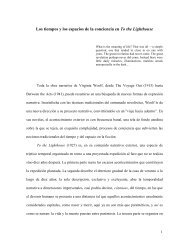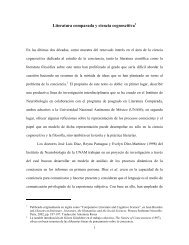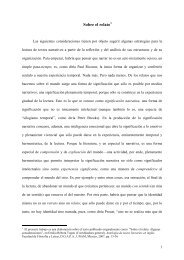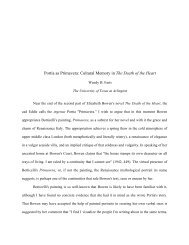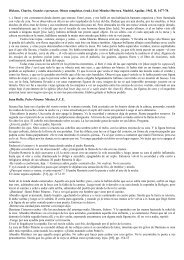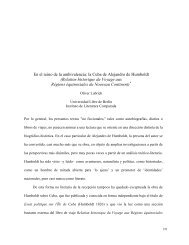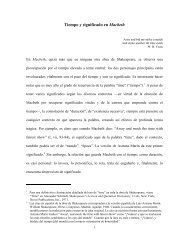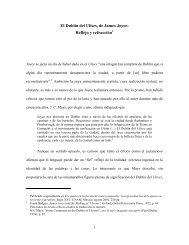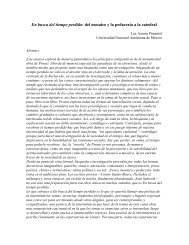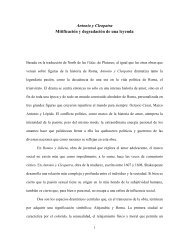Risa y penitencia - Luz Aurora Pimentel
Risa y penitencia - Luz Aurora Pimentel
Risa y penitencia - Luz Aurora Pimentel
- No tags were found...
You also want an ePaper? Increase the reach of your titles
YUMPU automatically turns print PDFs into web optimized ePapers that Google loves.
Eckphrasis and Cultural Identity:Octavio Paz’ “<strong>Risa</strong> y <strong>penitencia</strong>” 4.In the long tradition of ekphrasis, the verbal representation of a visual representation—as James Heffernan (1993, 3) has defined this textual phenomenon—often takes the form of adescription, and, given that the object described is itself representational, the descriptive textis usually informed by a narrative impulse, originating both in the temporal nature of languageand in the visual representation of human action. The narrative impulse is virtually present inany ekphrastic text, especially in the description of those plastic objects already inscribed innarrative—that is, those paintings, tapestries, or sculptures with a historical, mythical,biblical, or literary subject—the ekphrastic text, in fact, doing nothing less than re-inscribethe plastic object in its original narrative flow. But even in those works exhibiting no suchintertextual narrative connections, the sheer fact that they represent some kind of humanaction and interaction automatically triggers the actualisation of the narrative impulse. Let usinsist, however, that beyond and before this narrative impulse, the basic form of the ekphrastictext of some length is descriptive, 5 a textual practice that is essentially analytic. A descriptiondecomposes its object into its various meanings—parts, details, attributes of all sorts—whichare then displayed in a series of predicates proposed as the analytical equivalent of thedescriptive topic. The decomposition may also be of an analogical nature, approximating—asin metaphor—different realities proposed as equivalent; but in any case the decompositionand the tendency towards the inventory of parts or analogues is basically analytic.Furthermore, as each part or detail is focused in turn, the descriptive dwells on the concrete,sensuous, material, or formal aspects of the described object.4 “Ekphrasis and Cultural Identity. Octavio Paz’s ‘<strong>Risa</strong> y <strong>penitencia</strong>’”. Ponencia leíada en la Sesión: “Applesand Oranges: Comparisons Across Media Genres” del Congreso de la Asociación Nortemericana de LiteraturaComparada (ACLA), San Juan, Puerto Rico, abril 11-14 de 2002. (por invitación)5 The minimum form of a verbal representation of a plastic object is the allusion and the simile, but “fullfledged”ekphrasis always takes this basic descriptive form that may then evolve/devolve in a narrative.



